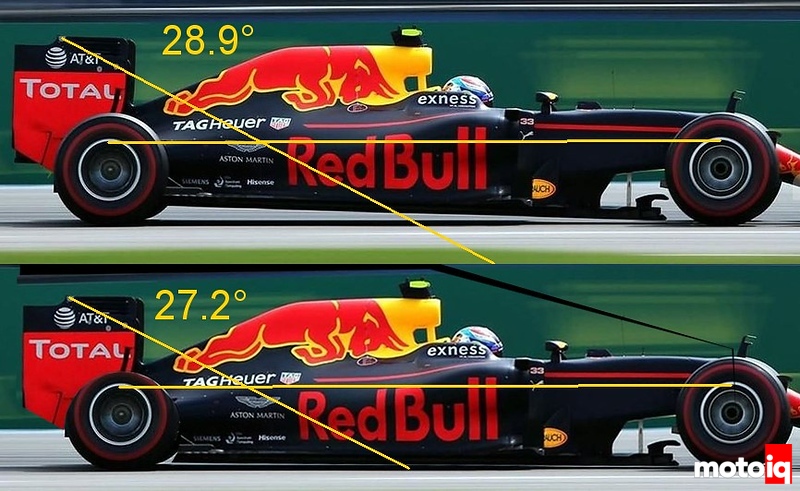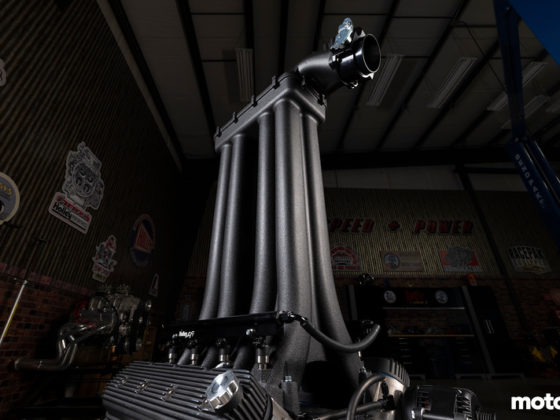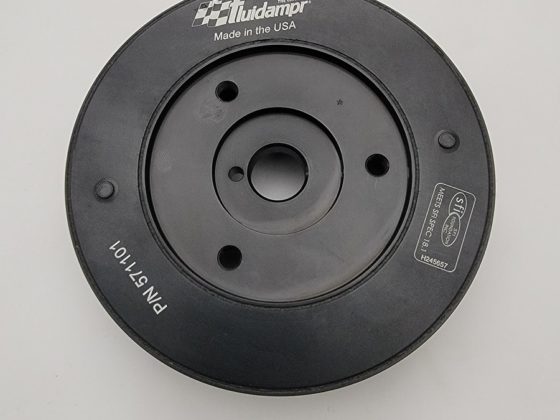If you intend to produce a winning car at the level of F1 you are accumulating tiny gains and performing thousands of tests. These devices need a stable platform that is vibration-free and measures the smallest possible values with pinnacle repeatability, taking hundreds or thousands of measurements, high accuracy, and low variance results of forces and pressures.
Real-world running on race tracks is, by contrast, very different. It’s a noisy, rough business with vastly different instrumentation requirements. The car is not held between static positions, it moves fluidly – sometimes violently – between kinematic extremes at high speeds and rates of change. Whilst the data we receive from race cars is not as resolute as what we see in a wind tunnel, it is contextually accurate. Pressure sensors indicating e.g., that a critical component of the underbody is stalling in a given instant is real, and ultimately lap times are what we are engineering for. Porpoising is difficult to replicate in the wind tunnel, in part for a variety of technical factors (most wind tunnel tests do not replicate the full scale or full speed of racing conditions) and in part, because tunnel testing faces significant challenges in trying to recreate dynamic vehicle conditions – a wind tunnel model does not bounce on its own suspension.
There are other practical limitations. The wind tunnel belt – much like the belts you know driving the accessories on your own car – cannot be set infinitely tight without risking failure. Despite operating typically on many tons of tension it invariably has some slack, and suction is used to keep it in place – but the test model car underbody, in creating suction, exerts a lifting force on the belt. This is one reason a minimum gap to the floor must be maintained in wind tunnel testing, there are many others that contribute to a key departure from conditions seen on track. We have designed and built wind tunnels for manufacturers and this is a small fraction of the technological challenges. Money can solve a lot, however, no matter what sort of tunnel you are using, the test method involved has practical limits needing to be understood. On-track validation won’t be going away any time soon.
Computational Fluid Dynamics (CFD) uses well-established formulas to predict the behavior of air around a test article though similarly has limitations of its own. Most codes break down the air volume around a vehicle into a series of units of various sized discretized volumes known as the ‘mesh’. The ‘mesh density’ refers to the size of these blocks; in general, increasing the mesh density increases accuracy at the expense of computing resources. To avoid an arms race around supercomputing resources, what teams are allowed is regulated, with allowances being relatively low against large supercomputers – just a few years ago F1 was limited to 25 or 30 double-precision teraflops (TFLOPS), which is less than our office sized Intrascale™ “Nimrod” cluster. Compute allowance is based on finishing results in the championship – teams at the back of the grid are incentivized with more resources: compute usage is even more precious to winning teams.
At any rate, the mesh density used for Formula One is more than twice as fine as typically utilized for road car development due to the immense complexity of an F1 car. The mesh density is carefully controlled, not just for accuracy vs compute compromises but also to ensure a stable result across all tests, high and low ride heights included. As the car approaches the ground, clearance can become so small that the mesh density becomes insufficient to accurately predict the behavior of the flow. One could simply increase the mesh density but the computing requirement increases as an exponent of this size, and large variances in mesh density can make comparative results against other mesh density tests inconsistent, creating resource requirements that are unfeasible for complete development processes where all simulations run with such high mesh densities. An actual ground impact simulation may need a completely different strategy – one that would require physical validation work to yield processes as robust as those teams will have spent years refining.
And again, CFD simulations are typically static assessments of how a vehicle might perform: a ‘freeze frame’ view of flow around a vehicle that in practice moves very quickly through time and space, with that movement complicating the flow field around key aerodynamic surfaces. The bleeding edge of research in CFD is very, very evolved. Is it theoretically possible to run a CFD simulation of a vehicle actually porpoising? Yes, though the computational requirements would dwarf anything teams might otherwise do in a resource-capped environment, which would take away valuable development resources from typical vehicle performance development: in short, a team might be able to do it, and they might get a detailed insight into or even solve porpoising this way, but a trade-off is made in terms of testing and time. Those decisions are made months before any on-track testing is done and while the rest of the vehicle development is still evolving.
As ever, the truth lies in track behavior. We find ourselves again dependent on real-life testing.
So what can mere mortals do in developing your own car?
For most platforms real-world behaviors match the CFD or wind tunnel predictions within ranges you can test. Few disciplines outside of F1 and LMP run at ride heights low enough to be out of range for CFD or wind tunnel environments (running that low would damage the vehicle in a handful of laps without a large consumable plank as in F1). Similarly, few disciplines are so regulated as to run designs with aerodynamic performance so extreme yet with performance margins so slim as to create a propensity towards porpoising across an entire vehicle category at the first track tests after a regulation change allowing underbody tunnels.
As you progress toward making enough downforce to experience porpoising you firstly rely on those CFD or wind tunnel tools, iterative design and testing across ride and rake will prepare you for the problem. If you are simply testing on track, the good news is that by nature you are testing across a range of attitudes. The disadvantage is that this is a test method with a far worse signal to noise, though this may be sufficient for basic development in lieu of competitors correctly applying deeper development resources. An amateur correctly applying the basics and testing only on track is quite unlikely to have this sort of issue.
For those using CFD or wind tunnel.
Peaks and valleys in the aero map should be found and smoothed out. You will need to optimize some part of the car to function differently in the ride height regime where the problem occurs. There are no magic bullets and each car will be case by case. The CFD tool itself will not tell you how to solve any problems. Your intuition, learning from each result and raw iteration count in design is the best way forward, particularly where study and interrogation of each result can be used to give you a detailed understanding of how various aerodynamic systems perform enough to provide you with knowledge towards options in aerodynamic configuration tuning complete vehicle designs to alleviate performance issues.
F1 solutions.
We will likely see a variety of solutions in F1 given the diversity in the shapes of the cars, particularly in regions most sensitive to tunnel performance (e.g., side pods). Some may come with more compromises than others. Performance development could suffer temporarily until better solutions are found.
I am very much looking forward to studying the various anti-porpoising approaches employed and testing them for myself. This continuing quest for knowledge and understanding is core to all aerodynamicists. I genuinely enjoy working with the experimentation inherent in modern vehicle aerodynamics, and I hope you will enjoy watching this most interesting 2022 F1 season as much as I will.
Sources
AMB Aero




13 comments
Brilliant article and interesting insight. Thank you for writing this!
His name isn’t Brilliant for nothing!
Name is one thing, his deeds and expertise are quite another 🙂
The other key issue was from a regulation standpoint. This case is not something that could be tested in the wind tunnel due to a regulatory speed limit for wind tunnel measurements.
Quote from Mattia Binotto: “Honestly, such behavior is normal with this type of car. And it cannot be simulated in the wind tunnel because it occurs at 250-270kph and the regulations limit the wind tunnel speed to 180kph.”
This therefore leaves only the CFD simulation and physical track testing paths for determining whether this issue exists, and gathering the data necessary to understand it.
The article touched on the regulation of wind tunnel speed and scale though maybe did not explain what was to do with the regulations.
Great article. Thank you for taking the time to write it for us.
Pretty certain that the current problems with porpoising has more to do with the ban on inerters for 2022. That coupled with the switch to 18” wheels (stiffer sidewalls increasing suspension frequency) probably has had an extra hand in exacerbating the issue.
“Unofficial proposals were flying around the paddock at Barcelona testing about introducing active suspension and the return of hydraulicly managed suspension and inerters, which dampen out certain frequency moments in suspension to fix porpoising. Formula 1 banned hydraulicly managed suspension and inerters in favour of traditional springs and dampers for 2022. These were highlighted as easy fixes to solve the porpoising issues if the FIA would allow this technology to return to the cars.”
https://www.racecar-engineering.com/articles/formula-1s-porpoising-problem/
That’s more like a cure for the problem, the cause of the problem is covered by Andrew here.
I guess that you didn’t read the linked article. I don’t believe that Andrew actually understands why this issue suddenly became a problem across all cars in 2022. Therefore, Andrew is talking about an aero solution to a mechanical problem, which *might* be possible, but is not a good method of problem solving.
“Porpoising is an issue on most 2022 #F1 cars.
Red Bull have found their solution in a very clever & legal suspension innovation. So they can now run super close to the track. With gas springs and inerters banned, they’ve exploited a non-newtonian fluid filled damper.”
https://mobile.twitter.com/ScarbsTech/status/1509809156521443341
He is talking about an aero problem and to me it’s pretty obvious that it is. I sort of think that careful tuning of the damper’s high-speed circuits would probably work better than non-Newtonian fluid which would work only in a narrow range.
Joe, you should note that at the end of Scarbs’ Twitter thread, he used #April1, and also he’s quoted the suspension engineer as calling the technology something that would shorten to an acronym of PIE, while making repeated references to custard.
I think you’ve missed the joke there…
Hahaha, the joke is way at the bottom of the thread!
Ground effect wasn’t discovered by accident, Peter Wright had been working on airfoil shaped side pods since the late 1960’s and designed a car for March with wing shaped side fuel tanks a few years later before joining Lotus.